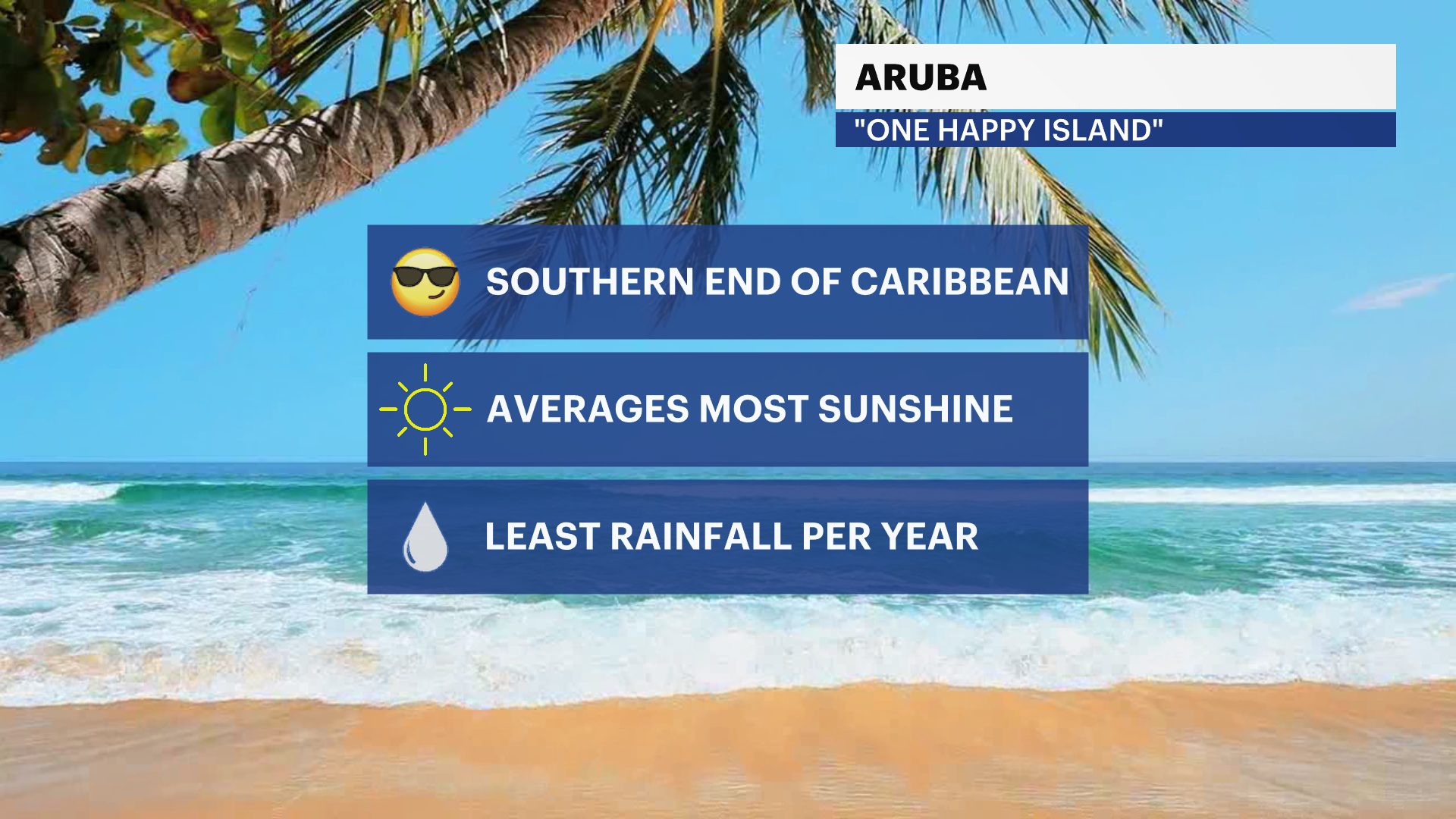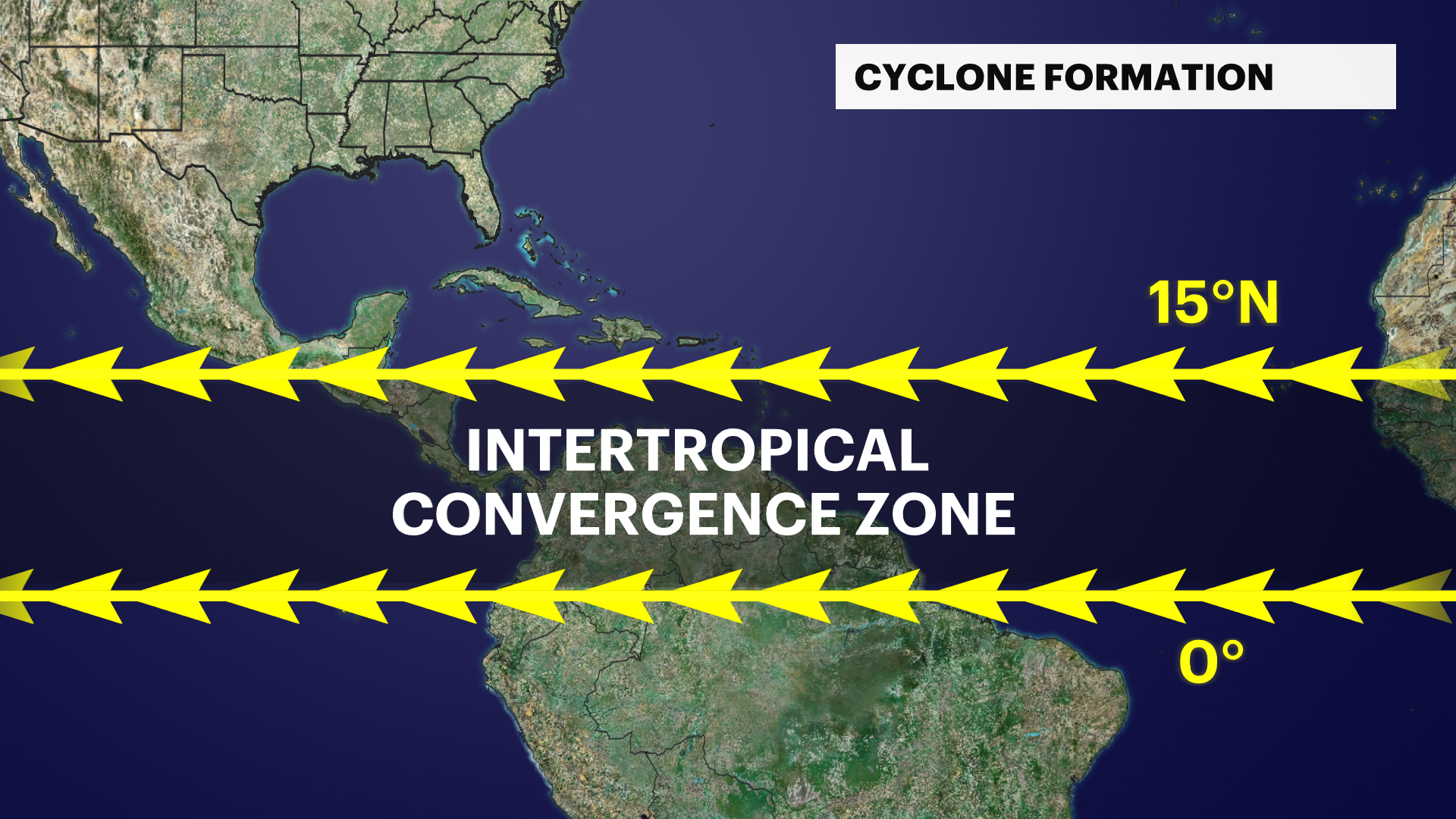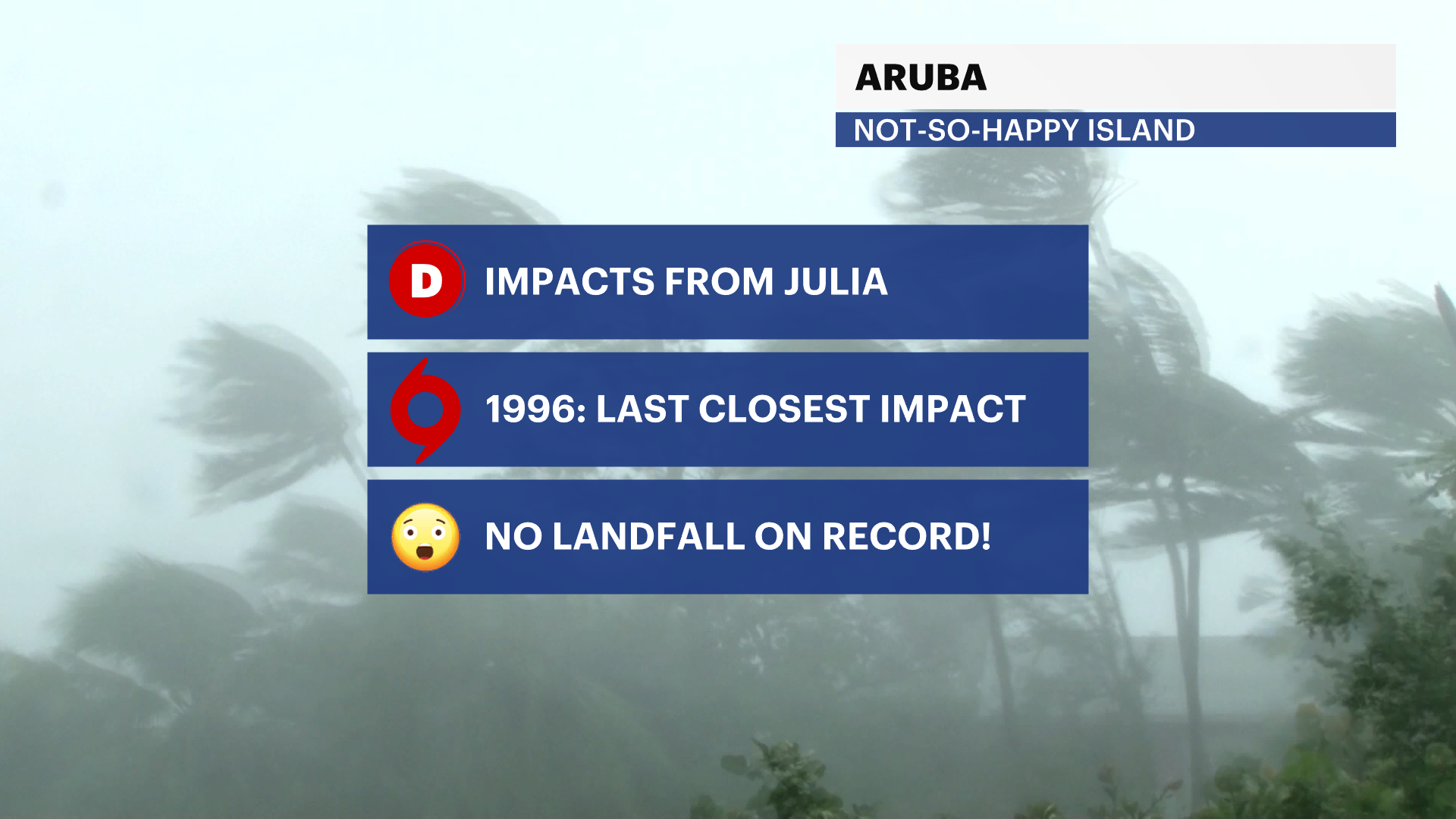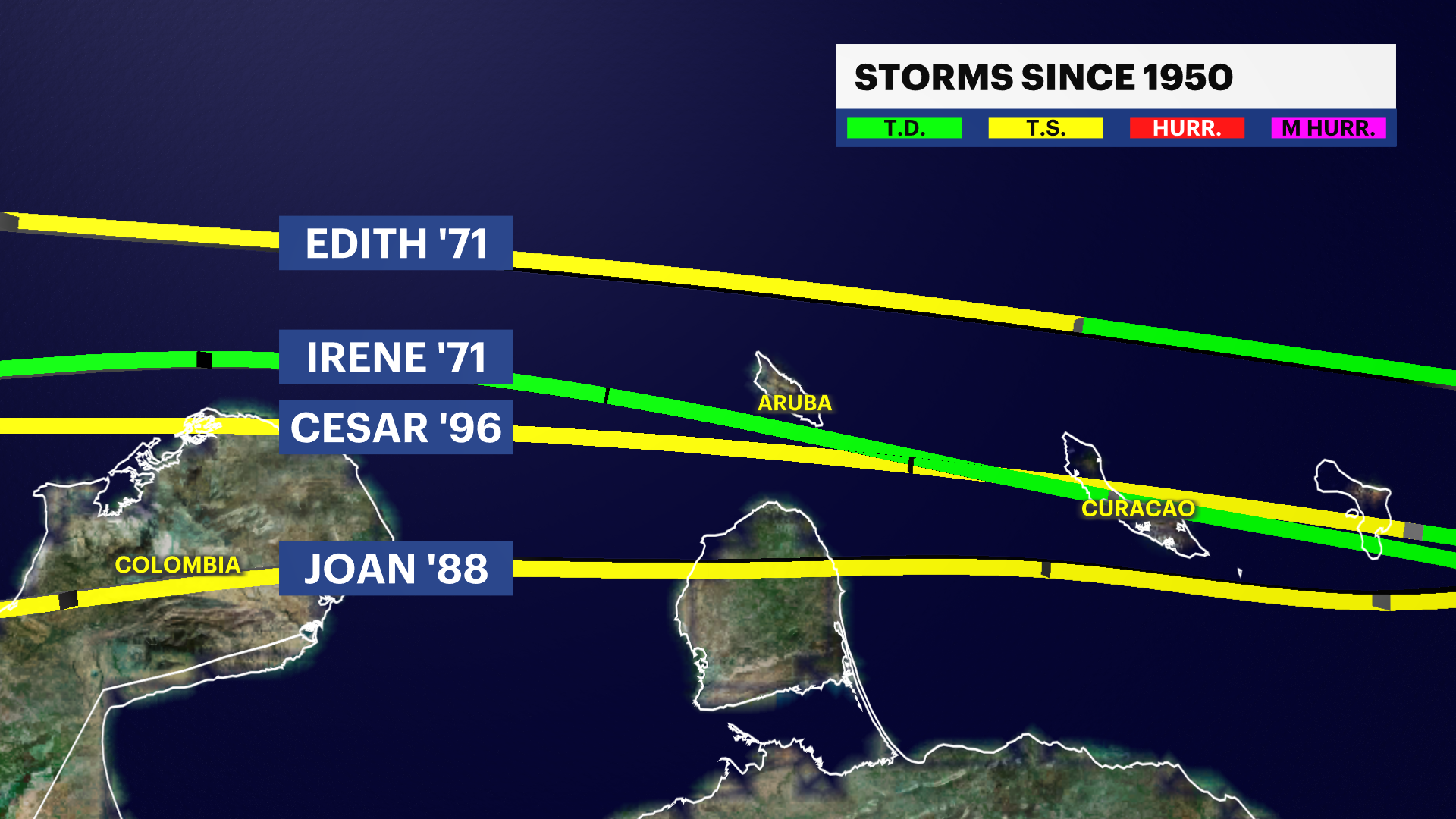More Stories
Julia is the closest approach by a tropical cyclone to Aruba in nearly 30 years. Late on Oct. 6, Julia made its closest approach to the island, as a tropical depression, just 30 miles away. The center was located over the northern Venezuelan coast.
Despite being 30 miles away, Aruba’s capital, Oranjestad, recorded 36 mph gusts. Hato Airport in nearby Curacao recorded 31 mph gusts.
There are two other nearby southern Caribbean islands to Aruba, known together as the ‘A-B-C’ Islands. A is for Aruba, B is for Bonaire, and C is for Curacao.
While not the southernmost island, Aruba is the closest island to the continent of South America, located less than 20 miles from the northern Venezuelan coast. Land interaction is one of the main reasons why tropical cyclones dissipate or weaken. These storms thrive on warm waters, not land.
Out of over 700 Caribbean islands, Aruba also averages the least amount of rainfall per year at about 15 inches. Most days are sunny and beautiful.

The Inter-Tropical Convergence Zone (ITCZ) plays another big role in this. The ITCZ is responsible for the formation of tropical cyclones. Air from the Northern and Southern hemispheres meet to form clusters of thunderstorms. As they form into tropical storms and/or hurricanes, they typically turn northward as they move from east to west. In the case of Aruba, which is located farther south in the ITCZ, it is rarely impacted compared to most other Caribbean islands. However, much of the Caribbean is located outside the ITCZ.

During hurricane season, many tourists and vacation-goers tend to avoid the Caribbean because of an increased threat of tropical cyclone impacts. Those typically include storm surge, freshwater flooding, strong winds and power outages.
So far in 2022, Hurricane Fiona devastated Puerto Rico. Islandwide power outages, fallen bridges, and destroyed structures are only some of the impacts. Subsequently, Hurricane Ian brought significant damage to western Cuba and the power grid was out for several days.
But for those who need to get their Caribbean fix during hurricane season, most are advised to go as far south as possible, such as the ABC Islands.
Fortunately for Aruba, Julia had other plans. This storm along with over 30 others passed only 70 miles offshore. Yet, not a single tropical cyclone has ever made landfall there.

In nearby Curacao, Hurricane Cesar in 1996 made landfall as a tropical storm. Cesar is the only tropical storm or stronger since 1950 to make landfall in any of the A-B-Cs. But no tropical cyclone has made landfall on Aruba in recorded history.

More from News 12
1:50

Drivers across the Hudson Valley were met with messy road conditions
1:38

Thunderbolt 12: Heavy downpours and gusty winds create minor flooding and difficult driving conditions
1:49

Storm to bring heavy rain & strong winds across the tri-state
2:20

Yorktown Highway Department ready to tackle overnight snow on the roads
2:33

Sadly, we will miss the peak of the Geminid meteor shower this year, but we'll get snow instead!
1:11
